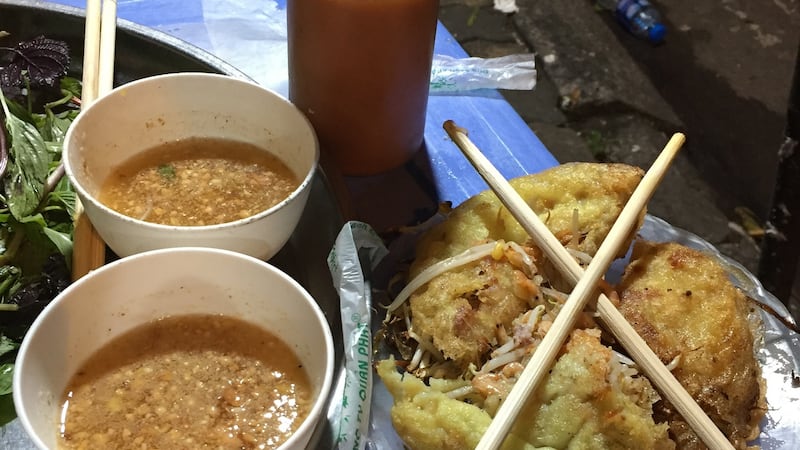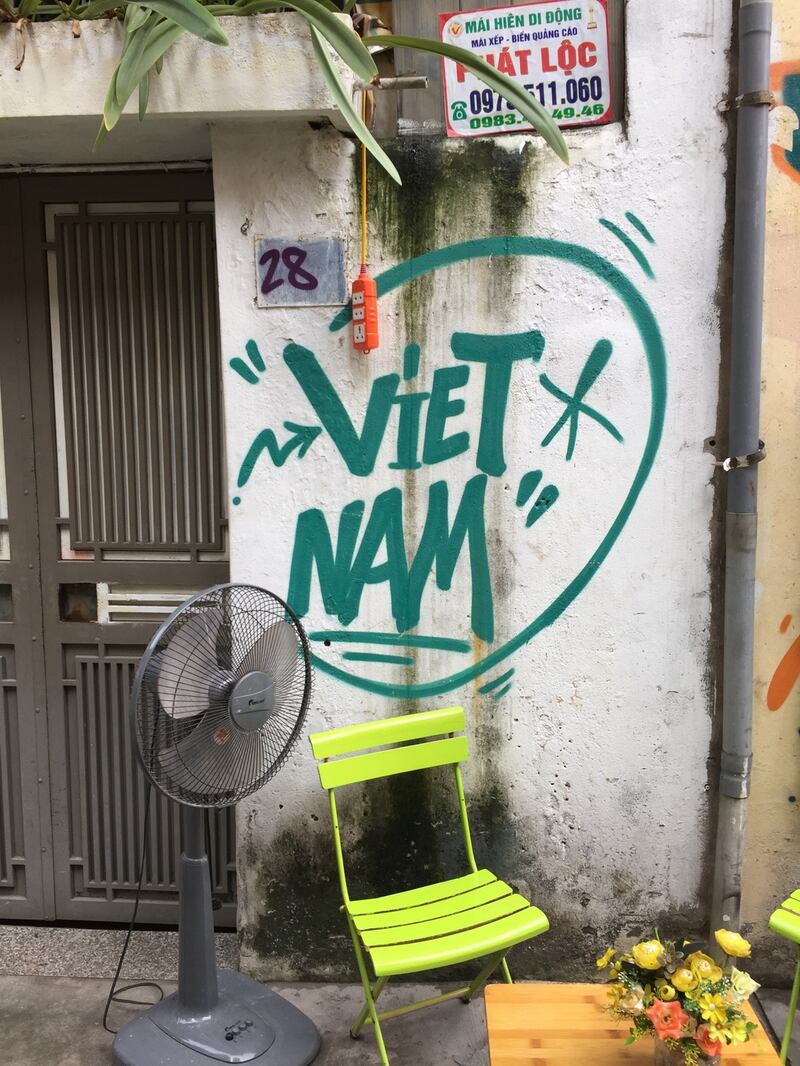The heat, the petrol fumes, the noise. These are the immediate hazards to your person as you negotiate your way around in Hanoi.
The average annual temperature touches 24 degrees, which is especially nice in October when you’re away from Irish wind and rain. The fumes come from the motorbikes, Hanoi’s primary mode of transport, of which there are five million on the city’s streets. The majority of drivers wear respiratory face masks, a sight that doesn’t make you feel like breathing in too deeply.
And the noise? Think a clatter of beeps, bips, honks in your face 24/7, and you’re not remotely close. Not even our hotel’s soundproofed windows could muffle the barrage of noise.
Yet it’s an experience like no other, the kind of thing you want to soak up when you’re somewhere very different. You get used to the dead heat, the acrid fumes, the constant din. You are constantly surprised not only with a cost of living that is one of the lowest in the world, but also the unwavering politeness and calm of virtually everyone you meet. Welcome to Hanoi.
We are here on a family visit, not on a press trip, so we can dictate where we want to go, when we want to go and when we want to leave, with the added bonus of insider tips (courtesy of our daughter, who has been living in the city for about six months) .
Our plan is to divide our two weeks in Vietnam into four locations: Hanoi, Hoi An, Da Nang and SaPa. Hanoi is at the start, middle and end, and within two days we know we have made the right decision not to spend all of our time in one place. The city is a blend of elegant if worn magnificence (notably, the Ba Dinh District, aka the French Quarter, the location of various embassies and government offices) and barely contained bedlam, the core of which is in the Old Quarter, which retains, mostly, the original street blueprint and architecture of "old" Hanoi.

Here, we feast on terrific street food that costs a pittance, walk along the weekend night market (I spend €6 on a pair of what I swear aren’t counterfeit Nike runners), drink beer from plastic mugs on Ta Hien Beer Street (less than €1 a pint) and, generally, take in the comings and goings of an energising city that is driven by what is, seemingly, a tireless workforce.
But Hanoi can be too much for the head after a few days, its stimuli and pace exhausting. Its anagrammatic cousin, Hoi An, is a perfect relief.
We take an internal flight from Hanoi to Da Nang, and from that city's airport get a Grab taxi (see panel) to Hoi An. A designated Unesco World Heritage Site, Hoi An's old town, and the city's historic centre, is regarded as a remarkably intact example of a 15th-19th century southeast Asian trading port. Inevitably, it's a tourist magnet too, with prices to match (still comparatively cheap by European standards), but it is so beautiful your gaze is taken up more by the buildings than the visitors.
We are lucky enough to be here for a few days during the city’s Lantern Full Moon Festival (which pays tribute to ancestors, a recurring socio-religious theme throughout our time in Vietnam), so the streets are festooned with colour, light and more old-world charm than you can imagine.

After a few days, we get a taxi back to Da Nang, south-central Vietnam’s tourist capital, where we stay in an Airbnb for one night. A brief (possibly unfair) comparative overview is that it’s all a bit Las-Vegassy – bright lights, LED-illuminated dragon-shaped bridges, uninterrupted stretches of beaches, high-end, familiarly named hotels. We are glitzed to bits, quite frankly.
Da Nang is also the starting point for the Hai Van Pass, a 25km highway that cuts through mountainous regions and roads that slither along curves and blind corners. Cue a modified Springsteen-esque Born to Run scenario, where our asses are glued to the passenger seats of motorbikes as we wind our way 500m above sea level. It’s a bracing thrill ride that acts as the storm before the calm of our next destination.

We travel to Sa Pa, a town in the Lào Cai Province in northwest Vietnam, via a five-hour coach trip. It is essentially a frontier town that appeals to tourists and visitors primarily because of its proximity to hundreds of kilometres of extraordinarily peaceful trekking trails. There is a dampness in the air that sticks to us and seeps in, and aside from our quietly spectacular 10km trek through terraced rice fields and villages (in the company of an equally serene guide), and my €14 purchase of a North Face jacket (that I swear isn't counterfeit), we feel that Sa Pa is a destination town too far gone to tourism for saving.
We leave Sa Pa for Lào Cai town, from where at 9pm we get the nine-hour overnight train to Hanoi. We have pre-booked a cabin for two on the so-called Orient Express because – well, you only live once, right? You do, of course, but the entire journey is so noisy and uncomfortable that we pull into Hanoi at about 5.30am without having had one hour of sleep.
It directly mirrors our experience of Vietnam: unique, bumpy, exhilarating, mystifying. Unforgettable, too.
Travel tips
Grab app: There is little by way of a decent public transportation system in Hanoi, so unless you have access to a motorbike – the preferred mode of transport – taxis are the best way to get around. Much cheaper and safer than official taxis is Grab, an app-operated booking system that matches you with Grab-designated motorbike or car drivers (the former marked out by green logos on their jacket and helmet).
It is simple to use: set your current location and chosen destination, view the exact – not estimated – price the journey will cost, and once agreed, a driver will come directly to you, a bike for one passenger, a taxi for up to four. In the app, you can see how far the Grab driver is away from you, as well as the vehicle’s license plate and model. Payment is cashless via credit/debit card on your phone. Other similar taxi apps include Mai Linh and GoViet.
Jaywalking: Do it. You heard me – do it! If you don't, getting to the other side of the road will take forever. Hanoi has, give or take, seven million people and five million motorbikes, so the traffic is at first overwhelming and nerve-wracking. On the first day in Hanoi, we spent at least 10 minutes on one side of a road wondering how we could cross it without getting run over.
The trick, we were told later by a resident, is to confidently look where you’re going and slowly, steadily, walk across the road. No one wants to deliberately hit you, so motorbike users simply weave around you. Do not stop until you reach the other side. In 2017, almost 100 per cent of Hanoi city councillors voted to ban motorbikes by 2030. Best of luck with that.










